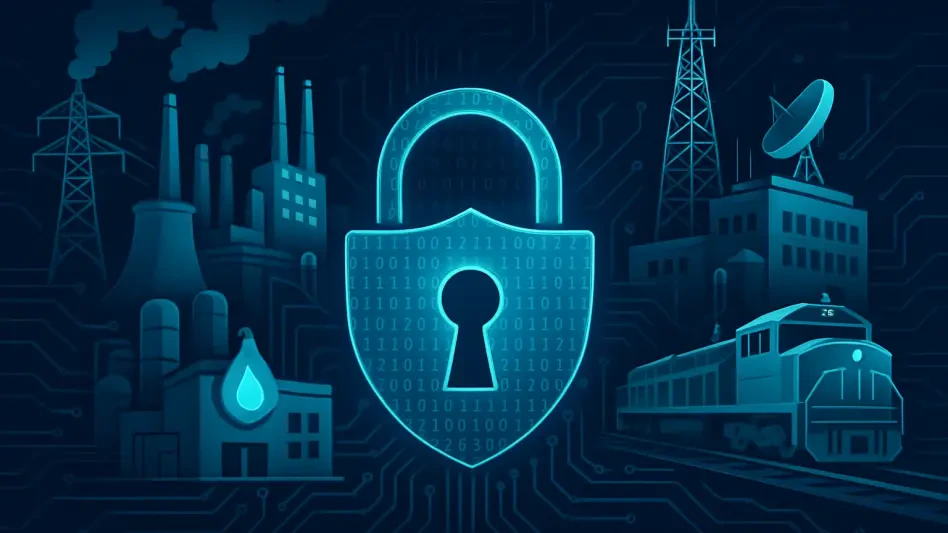In an era where a single cyberattack can cripple power grids, disrupt water supplies, or halt transportation systems, a six-week gap in federal cybersecurity protections sent shockwaves through national security circles, exposing the fragility of vital infrastructure to digital threats. This alarming void, caused by a government shutdown, underscored a chilling reality: without robust collaboration between government and private sectors, the backbone of daily life hangs in the balance. With hackers growing bolder and more sophisticated, Congress has now stepped in with a critical legislative move to restore a key defense mechanism, reigniting a national conversation on how to safeguard the systems that keep society running.
Why Did a Cybersecurity Gap Ignite National Alarm?
The expiration of a pivotal cybersecurity law during a federal government shutdown created a dangerous blind spot for the nation’s defenses. For six weeks, the absence of this framework halted the flow of real-time threat intelligence between private companies and federal agencies, leaving critical sectors like energy and healthcare vulnerable to attacks. Imagine a power grid operator unable to access timely warnings about a looming ransomware threat—such scenarios became a stark possibility during this period.
This gap wasn’t just a bureaucratic hiccup; it posed a direct risk to public safety and economic stability. Critical infrastructure, which underpins everything from hospital operations to food supply chains, faced heightened exposure to malicious actors. The urgency of this situation galvanized lawmakers and experts alike, framing the restoration of these protections as a non-negotiable priority for national security.
Unpacking the Core of Cyber Defense: What Is This Law?
At the heart of this issue lies a landmark piece of legislation designed to bridge the gap between public and private sectors in combating cyber threats. Enacted years ago, this law established a framework for sharing sensitive data about digital risks, equipping both government and industry with tools to respond swiftly to attacks. Key provisions, such as liability protections and exemptions from public disclosure rules, encouraged companies to participate without fear of legal backlash.
The significance of this system becomes clear when considering the stakes involved. A breach in a major utility or transportation network could disrupt millions of lives, causing cascading failures across interconnected systems. When the law lapsed on October 1 amid the shutdown, the absence of these collaborative channels left a glaring weakness in the nation’s cyber armor, amplifying the need for its immediate revival.
How Congress Responded: Temporary Relief and Financial Support
In a decisive move, the Senate passed a continuing resolution with a 60-40 vote to reinstate the cybersecurity law and a related grant program for state and local defenses, extending both until January 30, 2026. This legislative action not only reopened federal operations but also allocated substantial resources to bolster digital security. Specific funding includes $60 million for cybersecurity under the Office of the Chief Information Officer and over $7 million for related expenses at the Congressional Budget Office.
While these measures provide immediate relief, they are widely seen as a short-term bandage rather than a lasting cure. The funds directly support frontline efforts, particularly through state and local initiatives managed by the Cybersecurity and Infrastructure Security Agency, often targeting under-resourced regions. Yet, the temporary nature of the extension raises questions about the sustainability of these defenses in the face of ever-evolving threats.
Expert Perspectives: Charting the Path Ahead for Cyber Protection
Industry leaders and policy analysts have weighed in on the implications of this legislative step, offering sharp insights into what must come next. Jiwon Ma from the FDD’s Center on Cyber and Technology Innovation emphasized the critical window of opportunity, stating, “This 90-day period must be used to push for permanent reauthorization and update protections to match today’s threats.” The urgency in this message reflects a broader concern about the limitations of stopgap solutions.
Adding to the dialogue, Michael Centrella of SecurityScorecard highlighted the need for innovation, noting, “Automated data exchange and AI-driven analytics are no longer optional—they’re essential to outpace cybercriminals.” Beyond national borders, experts also advocate for stronger international partnerships, recognizing that cyber threats operate on a global scale. These voices collectively paint a picture of a field at a turning point, where adaptation and collaboration are paramount.
Strengthening the Shield: Concrete Steps for Enduring Security
Beyond temporary fixes, a robust strategy is needed to ensure the nation’s cyber defenses remain resilient. Updating legal protections to incentivize wider participation from private entities stands as a critical first step, particularly for smaller or rural operators who often lack the means to engage. Integrating advanced technologies like artificial intelligence can also accelerate threat detection, enabling faster responses to potential breaches.
Congress must prioritize permanent reauthorization within the current extension period, alongside crafting policies that facilitate global data-sharing agreements. These efforts should aim to create an inclusive framework, ensuring that even the most resource-strapped infrastructure providers have access to vital intelligence. By tying these actions to the broader goal of a secure digital economy, the path forward becomes not just a policy issue, but a shared societal imperative.
Reflecting on a Critical Turning Point
Looking back, the swift action by Congress to restore this cybersecurity framework marked a pivotal moment in addressing an urgent national vulnerability. The temporary extension and funding allocations provided a much-needed reprieve, halting the immediate risks posed by the lapse during the shutdown. Yet, the voices of experts echoed a persistent warning that short-term measures alone fell short of meeting the scale of modern cyber challenges.
The journey toward enduring security demanded more than quick fixes; it required a commitment to modernization and inclusivity in digital defense strategies. Lawmakers faced the task of seizing the limited window to enact lasting reforms, ensuring that critical infrastructure remained shielded from unseen threats. As the nation moved forward, the focus shifted to building a collaborative, tech-savvy, and globally connected approach to safeguard the systems integral to everyday life.








